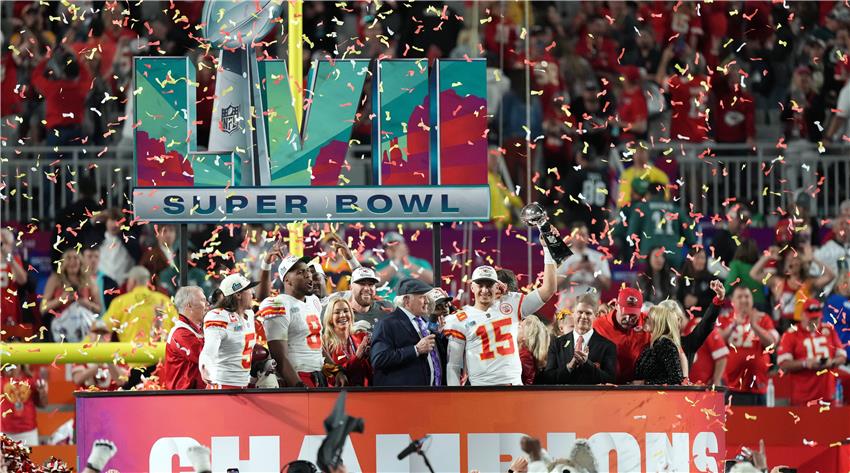
NFL Commissioner Roger Goodell On Streaming the Super Bowl
In 2022, the NFL took its first steps into the streaming world by partnering with Amazon Prime for "Thursday Night Football." The move was seen as a modernization effort by the league to adapt to changing viewer habits.
Fast forward to 2023, and the NFL upped the ante, with NBC’s Peacock exclusively streaming an NFL Playoff game for the first time. While these decisions marked a shift in how fans consume football, they also sparked controversy and raised questions about accessibility and inclusivity.
On the one hand, streaming the games makes it easier for people without access to channels with football. For fans in Canada who like to watch the games they've placed bets on, it can be difficult to find a cable provider that has American football. With sports betting ontario being so popular these days, increasing access to live football games should be an important focus for Goodell and the NFL.
Many NFL fans were incensed by the league's decision to require an additional subscription service to watch certain games. The exclusive streaming deals, particularly for high-stakes matchups like playoff games, left some feeling excluded and frustrated. The Kansas City Chiefs and the Miami Dolphins faced off in one such game, leaving fans divided over whether the convenience of streaming outweighed the cost and inconvenience.
How Super Bowl LVIII Was Streamed
When questioned about the possibility of streaming the Super Bowl, NFL Commissioner Roger Goodell remained steadfast in his support of broadcast television. Goodell emphasized the importance of reaching the widest audience possible, citing the millions of viewers who tune in to watch the Super Bowl on free, over-the-air television. However, he acknowledged the growing popularity of digital streaming platforms like Paramount+, which hosted a digital stream of Super Bowl LVIII alongside the traditional broadcast.
In total, Super Bowl LVIII was the most-watched event in US TV history, with a whopping 123.4 million viewers. The majority of those viewers, 120 million to be exact, watched using the traditional cable broadcast. The remaining viewers were split across Paramount Global's other digital services. This suggests that while cable TV remains the dominant method for watching big sporting events, streaming does have its place and may continue to grow in viewership.
Goodell's remarks underscored the NFL's recognition of changing media consumption trends. With consumers increasingly turning to digital streaming services, the league aims to meet fans where they are. The success of the Peacock stream, which attracted a younger audience and outperformed traditional broadcasts, highlighted the potential of streaming platforms to reach new demographics.
While the NFL's embrace of streaming reflects its commitment to innovation and adaptability, it also raises concerns about access and inclusivity. As the league continues to explore new distribution models, it must strike a balance between catering to evolving viewer preferences and ensuring that football remains accessible to all fans, regardless of their preferred platform.
Expanding further, the NFL's venture into streaming signifies a broader trend in the sports entertainment industry. Major sports leagues worldwide are increasingly leveraging digital platforms to engage with fans and monetize their content. Beyond live game broadcasts, streaming services offer a wealth of additional content, including highlights, analysis, documentaries, and behind-the-scenes footage, enriching the fan experience and driving viewer engagement.
The Challenges Streaming Brings
However, while streaming provides unparalleled convenience and flexibility for consumers, it also presents challenges for traditional broadcasters and cable networks. As audiences migrate to digital platforms, traditional media outlets must adapt their strategies to remain competitive in an increasingly crowded marketplace. This shift has prompted a reevaluation of traditional advertising models and revenue streams, with networks exploring new monetization strategies to offset declining viewership and ad revenues.
Moreover, the rise of streaming has fueled debate within the sports industry about the future of exclusive broadcasting rights. As streaming platforms vie for lucrative content deals, sports leagues must navigate complex negotiations to maximize their revenue potential while ensuring widespread access to their games. The balance between exclusivity and accessibility is a delicate one, requiring careful consideration of the diverse needs and preferences of fans worldwide.
Ultimately, the NFL's foray into streaming represents a significant step forward in the ongoing evolution of sports media. By embracing digital platforms and expanding its reach beyond traditional broadcast channels, the league is positioning itself for long-term growth and success in an increasingly digital world. As technology continues to reshape the sports landscape, the NFL remains at the forefront of innovation, continually striving to deliver the best possible experience for fans, wherever they may be watching.
